
This article is a very in depth look at “Fish TB”. It is only of interest to the real nerds, like the author. If one wants to be bored to tears read on.
What is “Environmental Mycobacteriosis”
The word “Environmental” in Environmental Mycobacteriosis (EM or Fish TB) is important. Environmental means an organism commonly found free living in the environment. This distinguishes this Mycobacterium from the Mycobacterium which causes human tuberculosis. Human tuberculosis does not multiply in the environment and is not a normal fauna of the environment. Environmental mycobacteriosis is found in 75% all aquariums (Beran et al., 2006) as part of the natural fauna. This make fish TB much more common and difficult to eliminate than human TB.
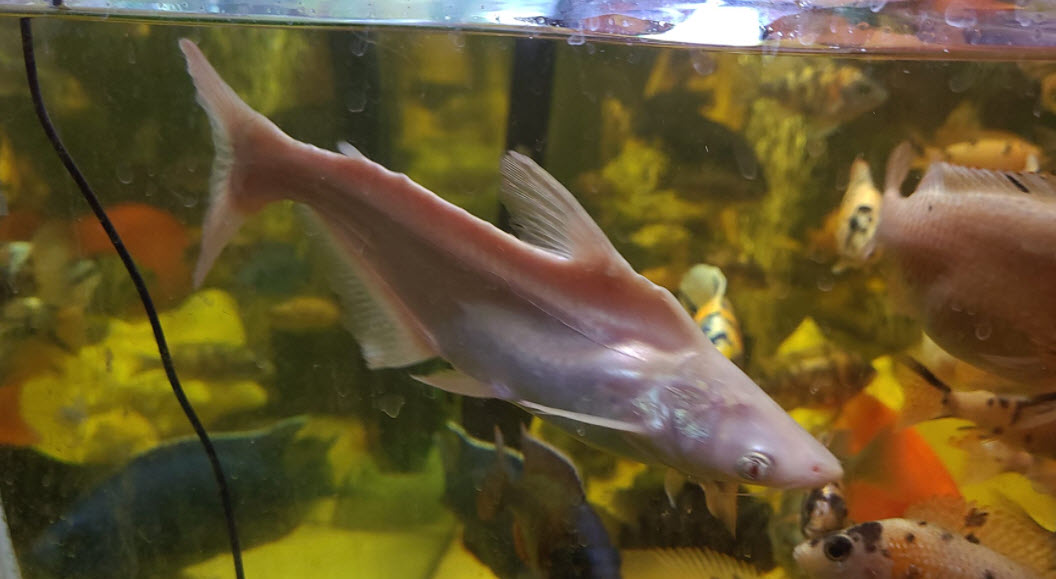
Environmental mycobacteriosis is also present in roughly half of all fish in most aquariums (Beran et. al. 2006). It is very common to have a few fish in ANY aquarium exhibit signs of environmental mycobacteriosis. These fish CAN live very long and productive lives. They CAN also die!
.
The Presence of Fish TB is Neither a Death Sentence for a Fish or for an Aquarium
.
Understand, very few aquariums with a lot of fish in them DON”T have some fish with one or more signs that they have fish TB (of course the only way to know for sure is to kill the fish and put their organs under a microscope).
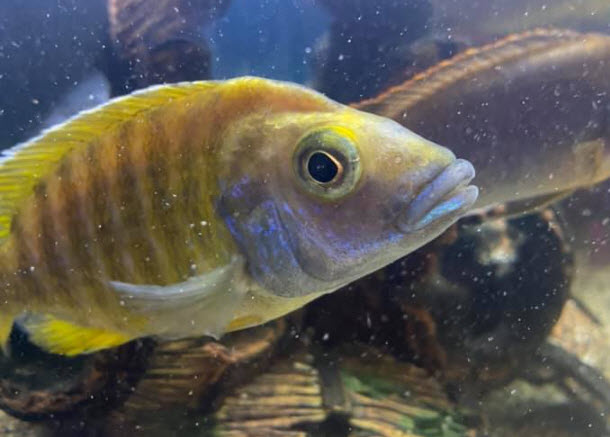
Non-tuberculous mycobacteria are relatively common environmental bacteria. This means that they can live in the aquatic environment and do not require the presence of fish or fish tissue to survive. They have been isolated from drinking water supplies, swimming pools, coastal waters, and aquaculture facilities. Mycobacterium of one species or another (there are many species and strains with different pathologies) is probably present in virtually all aquariums. Per the Book “Fundamentals of Ornamental Fish Health”, Helen Roberts, 2010, Page 182:
“Mycobacterium spp. is ubiquitous in the aquatic environment; a recent report found 75% of water samples from decorative aquaria to be positive for Mycobacterium spp. (Beran et al., 2006). Environmental factors that favor growth of mycobacterium include low dissolved oxygen, low salinity, low pH, warmer water, and high organic loads (Francis-Floyd and Yanong, 2006). Although mycobacteriosis has been reported in greater than 150 species of freshwater, brackish, and marine species, tropical aquarium fish are most commonly affected (Decostere et al., 2004).”
One study cultured mycobacterium from 75% of the water and 42.9% of the fish in an aquarium (“Distribution of Mycobacteria in Clinically Healthy Ornamental Fish and Their Aquarium Environment”, Beran et. al. 2006). Considering that culturing mycobacterium is difficult at best this would indicate that virtually all the fish in the aquarium harbored the pathogen in their bodies.
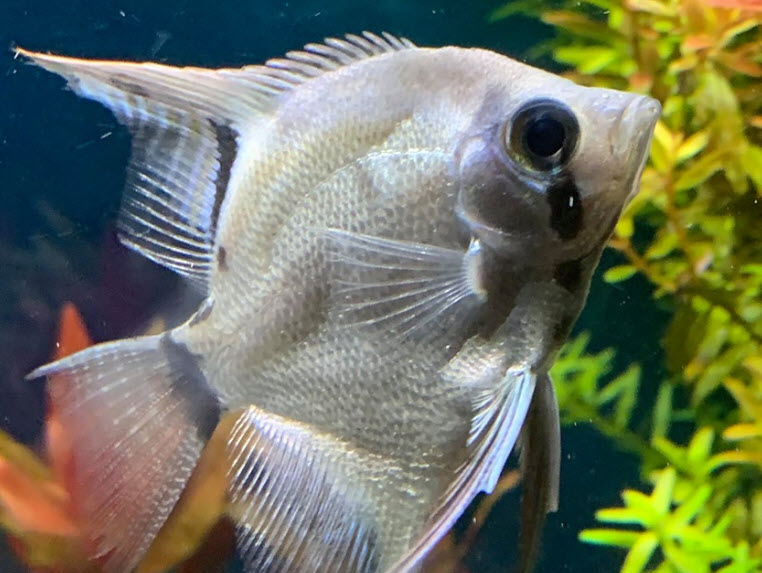
The ubiquitousness of environmental mycobacterium means that it probably infects all multicellular animals (metazoans) in an aquarium to some degree, The question “Are snails a vector for fish TB?” is often seen of fish blogs and forums. While snails can probably have EM infections they won’t be a “vector” in the true sense. They can probably “have” EM and thus contribute to the numbers in a given tank, just like all fish and probably all metazoan animals in the tank. But when I think of “vector” I think of a mosquito who doesn’t really get malaria but carries it from one human to another human. So I’m not sure one can define a snail as a “vector” for EM.
Symptoms of Environmental Mycobacteriosis in Fish
The Fish TB (Mycobacteriosis) symptoms reported by authors of various books on fish disease include:
“Fundamentals of Ornamental Fish Health”, Helen Roberts, 2010, p 182:
“In mycobacteriosis, clinical signs are usually nonspecific and can include ulcerative skin lesions, reduced appetite, emaciation, lethargy, exophthalmia (“pop eye”), swollen abdomen, anorexia, and fin/tail rot, and skeletal abnormalities (Barker, 2001; Palmeiro and Roberts, 2009). This disease is usually chronic, slowly progressive, and causes low to moderate mortalities. Mycobacteriosis is the most common chronic wasting disease of aquarium fish.”
“Fish Vetting Essential”, Dr. Richmond Loh, 2012, page 112:
“Mycobacterium cause a gaunt appearance, inappetence, wasting, ascites, loss of color, exophthalmia, loss of scales, spinal cord deformity, loss of balance, listless behavior, fin rot and external ulceration of the body.”
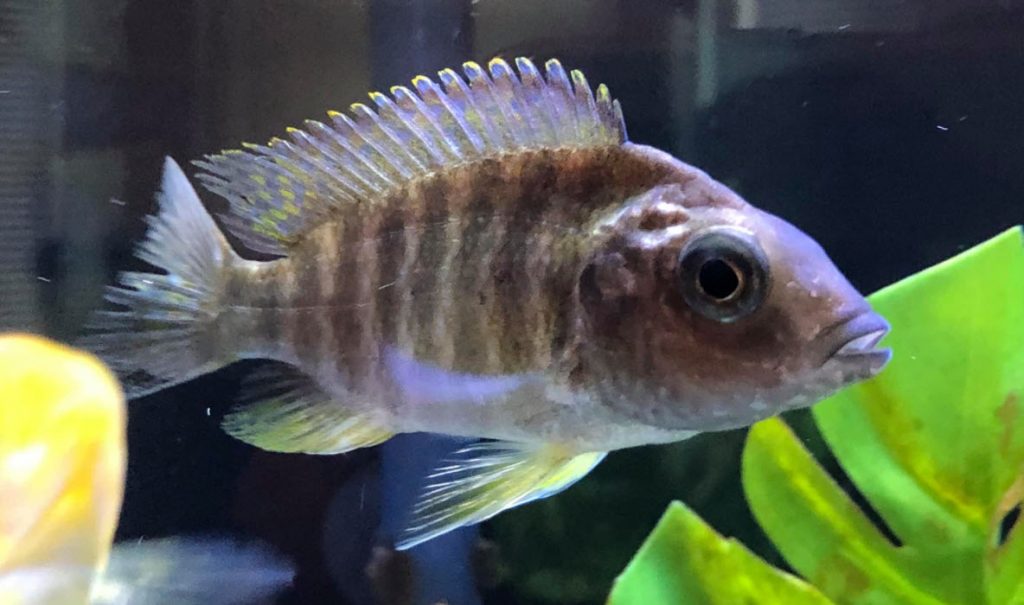
“Manual of Fish Health”, Dr. Chris Andrews, 2010, p. 162:
“Fish suffering from this disease often have an emaciated, hollow bellied appearance, with coincident loss of appetite and loss of color. They may exhibit other symptoms, including “pop-eye”, cloudy eyes, fin rot, body ulcers and listless behavior.”
“Handbook of Fish Disease”, Dieter Untergasser, 1989, p. 79:
“Symptoms could include: bloating of the body caused by fluid accumulation in the body cavity, emaciation along the narrow dorsal ridge (razorback), sunken belly, loss of appetite, scale loss, lifted scales, open skin lesions, popeye to the point of the eyes actually popping out, spinal curvature, pale coloration and jerky swimming,”

In addition to these four book references there are University papers which confirm the symptoms. “Mycobacteriosis in Fish”, Francis-Floyd et.al. University of Florida, 1999:
“Because of the slow progression of the disease, younger fish infected with mycobacteriosis show no external signs. As fish age or are stressed, the infection becomes more serious. A chronic progressive disease develops that may be characterized by emaciation, inflammation of the skin, exophthalmia (“pop-eye”), open lesions, or ulceration. Fish may become sluggish and bloated, refuse to eat, and develop fin and tail rot as well as scale loss. Edema (excess fluid accumulation) may develop, as well as peritonitis (inflammation of the body cavity). If infection spreads to the skeletal system, deformities such as a bent spine may be noticed.”
Per “Mycobacteriosis (Tuberculosis) of Fishes”, S. F. Snieszko, University of Nebraska, 1978:
“Among these signs are emaciation, loss of appetite, sunken abdomens, shallow grayish irregular ulcerations, fin rot, deformities of the vertebral column and mandible, exophthalmos, and loss of one or both eyes. Fish become listless and show difficulties in maintaining balance.”
As these six references make clear, there are many symptoms of fish TB. But emaciation, a “gaunt” appearance and sunken bellies are a pretty common theme.

Medicines for Environmental Mycobacteriosis
There is no effective medicines for fish TB (Mycobacteriosis) available to the home aquarist, despite the claims of some profit minded manufacturers. A reference is useful: “Antibacterial Drugs in Fish Farms: Application and Its Effects”, Sekkin et al. 2011:
“Mycobacteriosis in fish is a chronic progressive disease caused by certain bacterial species within the genus Mycobacterium. Mycobacterium marinum, M. fortuitum, M. salmoniphilum and M. chelonae are all considered pathogenic for fish. All are aerobic, acid-fast, gram positive and non-spore forming. There is no fully effective treatment.”

Per the book “Fundamentals of Ornamental Fish Health”, Helen Roberts, 2010, page 182
“There is no effective cure for mycobacteriosis. Various antibiotics such as rifampin, erythromycin, streptomycin, kanamycin, doxycycline, and minocycline have been suggested as possible treatments, but a clinical cure is unlikely (Barker, 2001; Francis-Floyd and Yanong, 2006; Palmeiro and Roberts, 2009).”
Some claim enrofloxacin antibiotic is effective against TB (Mycobacteriosis). This is not true. Mycobacterium of any sort are only susceptible to treatment with multi-antibiotic regimens of many months’ duration. The antibiotics required typically require a prescription to get them and they are expensive. The mycobacterium frequently mutates and is very slow to reproduce. It is only susceptible to antibiotics when reproducing.
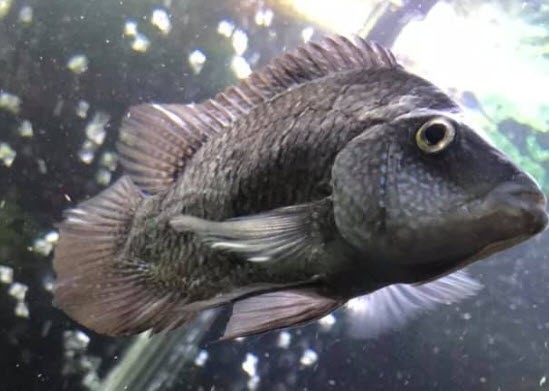
Effective Treatments
The fish vet from Australia, Dr. Loh, confirms in his videos there is no effective antibiotic for TB (Mycobacteriosis) in fish. But Dr. Loh has been effective at stopping the progress of TB by cleaning up the water with large amounts of biofiltration. Diana Walstad reversed an outbreak of TB using UV sterilization of the water. These options improve the immune systems of the fish and allow the fish to fight the fish TB naturally.
If one has fish with mycobacteriosis, the best treatment is to:
- add copious amounts of biological filtration that isn’t thoroughly cleaned ever. Large canisters filled with foam or pot scrubbers, sumps and under-gravel filters are the best treatment for fish TB.
- Add a lot of aeration with either ‘choppy waves” at the water surface or a lot of bubbles from a decent sized air pump
- Feed fish lightly. Feed them a maximum of one eye volume once per day. Fish are coldblooded creatures that do best with feeding only 1% to 2% of their body weight per day. That is not a lot of food.
- Adding a UV sterilizer can also help reverse a plague of fish TB.
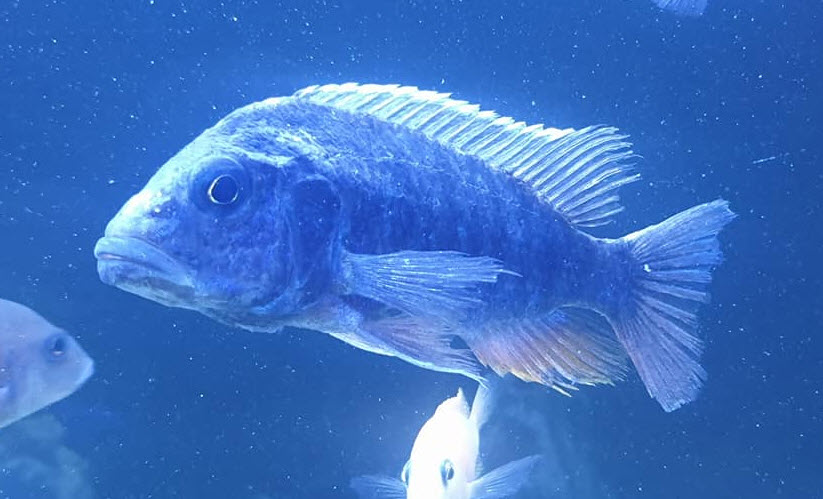
As many aquarium diseases, anything which lowers the immune system of the fish can result in fish TB attacking. Fish TB is also more prevalent in water with low dissolved oxygen, low pH, higher temperatures, and high organic loads. Per a research paper “Mycobacterial Infections of Fish”, Ruth Francis-Floyd (2011):
“Mycobacterial organisms thrive under certain environmental conditions, including warm water temperatures, low dissolved oxygen levels, acidic pH, high soluble zinc, high fulvic acid, and high humic acid. Many of these conditions—especially the low dissolved oxygen, low pH, and an organically rich environment—are present in intensive aquaculture systems. An important part of preventing disease is decreasing the exposure threshold of host fish. If the environment favors growth of the organism, there will be greater numbers available to infect fish housed in the system. This can significantly increase the risk of infection.”
So cleaning up bottom mulm and increasing circulation to get mulm into the filters can help with a fish TB plague. This does NOT include cleaning up the filter. The brown gunk in a filter is good and should never be cleaned unless the flow slows. The fish has to swim through the mulm in order for the mulm to increase the loading of environmental mycobacteriosis on the fish. So mulm in the filter or mulm down in the substrate will NOT contribute to an outbreak of environmental mycobacteriosis.
The fish below has SYMPTOMS of environmental mycobacteriosis along with what might be either ich or epistylis. This is common. The E.M. weakens the fish and opens it up for all sorts of secondary infections.
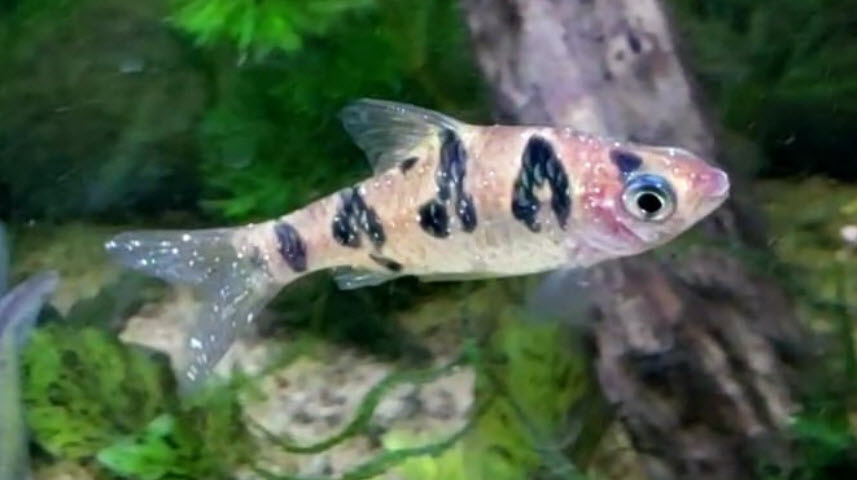
How to Treat EM if One has Huge Amounts of Filtration and Aeration
I have probably 500 fish in sixteen aquariums throughout my home. ALL of these fish have huge amounts of over filtration. I probably have more effective surface area per pound of fish than any other amateur in the world (public aquariums use sand and bead filters that I can’t compete with). I have crystal clear water in all my tanks and amazingly healthy fish. But I still have the occasional fish pop up with what APPEARS to be fish TB (EM). They have a hollow belly, an oversize head and/or slight thinning on the back.
These fish probably have fish TB 50% to 80% of the time. The diagnosis is NOT easy! So what do I do with such fish? IF and ONLY IF the fish has an obvious problem (I do not like to have sickly looking fish in my aquariums. Just me, anyone is free to take a different approach!) I isolate them in a quarantine tank. I then do a shot gun approach in case it isn’t fish TB. I use the medicated food I have in my freezer (metronidazole, Maracyn 2, and fenbendazole in food) to feed the fish (medicated food once per week). I keep them on that regimen for two months. If they haven’t improved I then euthanize them. Just what I do.
Life Expectancy with Fish TB
Many hobbyists’ aquariums have one or two fish with hollow belly which live long lives apparently unaffected by their affliction. These long-lived fish can just have the hollow belly or they can have other more subtle characteristics of TB. An example is the following fish:

The fish above has no hollow stomach. But it does have a razorback, an indent directly above the eyes, a head too large for its body and a slightly arched back. These are all signs of fish TB. This fish lived a long life and fathered many broods.
Euthanasia and Sterilization
Researcher Ruth Francis-Floyd in her article “Mycobacterial Infections of Fish” advocates euthanizing all the fish in an aquarium if any signs of TB show up.
“Mycobacterial diseases are not treatable and in most cases infected fish populations should be euthanized and their housing unit carefully cleaned and disinfected using mycobacteriocidal agents.”
But this strategy is very difficult to impossible to use, considering how ubiquitous mycobacteriosis is. Zebrafish research facilities have been unable to keep the disease out of their aquariums (“Strategies to Mitigate a Mycobacterium marinum Outbreak in a Zebrafish Research Facility”, Mason et. al., 2016, University of Oregon) despite spending millions of dollars.
Ms. Francis-Floyd admits it is impossible to diagnose TB without killing the fish and sectioning it. On this basis one should not euthanize fish with apparent signs of mycobacteriosis. Ms. Francis-Floyd also admits that even a strong bleach solution will not kill the mycobacterium (there are only a few special “mycobacteriocidal agents” available only through specialty distributors). Thus one should not try to sterilize an aquarium, it simply won’t work.

Myths About Fish TB
There are a huge number of web pages on fish TB. These pages say the following:
- “Wasting disease” is virtually always caused by internal parasites such as hexamita, not TB
- Fish TB is a rare disease
- Fish TB is rapid onset and kills rapidly
- Fish TB can be cured with antibiotics
- If one fish gets TB isolate it before the others get it
- Disinfection of the aquarium will prevent the organism from spreading
- Fish TB is always a death sentence for both fish and an aquarium
- Fish get TB by eating fish which have died from the disease.
.
ALL these Ideas are Myths and Not True
.
Not only are these points untrue, they are exactly opposite the truth in most cases.
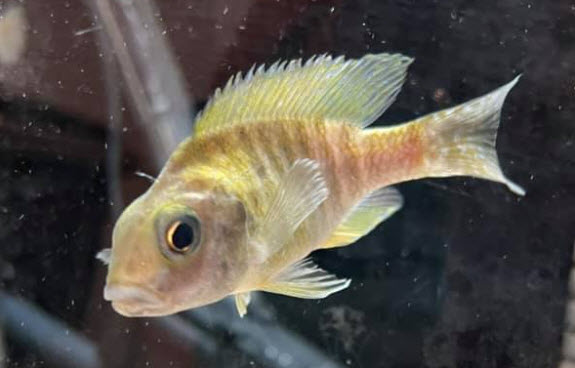
.
Return to Diseases Index Page
Return to Fish Tuberculosis Page
.
Aquarium Science Website
The chapters shown below or on the right side in maroon lead to close to 400 articles on all aspects of keeping a freshwater aquarium. These articles have NO links to profit making sites and are thus unbiased in their recommendations, unlike all the for-profit sites you will find with Google. Bookmark and browse!
.

Dave says
In reply to Sarah …….. Yes, go ahead and introduce new fish.
Sarah says
All my TB-infected fish have now died. I introduced the pond mud into the filter about three months ago and I have a UV steriliser running. So do I now introduce new fish?
Dave says
In reply to Jim …. Adding salt will not prevent reproduction inside the fish but it will lessen the loading in the water column, much like UV does.
Jim says
One of the quotes states that mycobacterium thrive in low salinity. Would adding aquarium salt lower the reproduction rate of the mycobacterium?
Sarah says
Hi Dave. I’ve put the pond mud in the filter and will wait at least two months etc. How should I proceed after that? The three fish that clearly have TB are still in the tank.
I leave them in there? And then introduce a couple of “test fish”? :-/ Got the UV filter running and won’t be touching the other filters unless clogged etc. Thanks.
Sarah says
Thanks Dave. I’ll do this. I’ve kept fish for the last 20 or so years and this is the first time I have bothered with being diligent cleaning some sections of the filter and changing the water. Never have I ever had this problem before with losing fish. Your help makes sense and reinforces what I was doing previously (or lack of!) was actually for the best. I’ll take your advice. Thank you!
Dave says
In reply to Sarah ….. Just leave the tank be for two months or so AFTER adding a teaspoon of pond mud. This will give one a mature tank which should be able to handle fish TB. https://aquariumscience.org/index.php/2-14-the-mature-aquarium/
Sarah says
Hi. I have an outbreak of fish TB which has killed off nearly all my fish (just three left and all have symptoms) in the space of nine months. I’ve added a UV steriliser and a big canister filter recently (in addition to the in-water filter that was already there). Once these fish have died, where do I go from here? You’re saying not to bother disinfecting? Do I put new fish in there and risk giving them an effective death sentence? Any advice would be greatly appreciated. Thanks.
Darwin Laganzon says
Good work right here. Props for the proper research, I really appreciate that. These aquatic websites are just pure confusion and sometimes rubbish baseless information. Always reading your work and you always amaze me with the quality and amount of work put in here. Never left the site empty handed.
Dave says
In reply to Andrew . There are no beneficial bacteria in the water column therefore UV can’t harm the beneficial bacteria. Beneficial bacteria are ONLY found on surfaces.
Andrew says
Hi Dave,
Im a major fan of your work and have read your website at least twice over.
Concerning UV sterilization of water to kill off pathogenic bacteria: wouldnt this also kill of beneficial bacteria such as those in the nitrogen cycle?
Further, you mention often “crystal clear, bacteria free water”. I wanted to clarify with you that in this statement you mean to say “free of pathogenic bacteria”? Are there not beneficial bacteria in the water column?
Dave says
That is what I would do
Joshua Marcell says
Sp the few fish I jave that show tb in my main tank just keep them in there and feed less, more aeration, sponges I shouldn’t try to isolate them